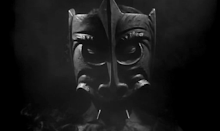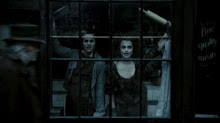
Why’d I Buy It?: I think I probably picked it up at a Criterion sale a while back. Hearing that it was the inspiration for the Crazy 88 fight in Kill Bill didn’t hurt either.
Why Haven’t I Watched It?: I truly have no idea.
How Was It?: None too shabby. The first part of The Samurai Trilogy, Samurai I: Musashi Miyamoto, is a well made and at times truly beautiful piece of old school epic storytelling.
The film may not have the poeticism of a Kurosawa film, but its about as far as you can get in tone from the exploitation style Samurai films that this event has spent the most time covering. More then anything it resembles a forgotten work of Hollywood golden age filmmaking. More a piece with the work of Raoul Walsh or King Vidor, then Seijun Suzuki. The film seems more likely to appeal to fans of Errol Flynn and John Wayne, rather then those of Ogami Itto and Hanzo.
Not that it doesn’t do the job of being an awesome Samurai film as well. The film follows Musashi (played by the inimitable Toshiro Mifune. Making what is somehow his first appearance in Summer Of Samurai) and his friend as they leave their small village to seek fortune and glory in the war. After a few, surprisingly stark, disillusioning battle the two wounded Samurai take refuge with a mother daughter team of grave robbers (giving the uneasy feeling that we have accidentally rented Onibaba). And before long the two have split ways, with Mifune attempting to return home, and his friend making his way with the mother daughter duo. Thus abandoning his fiancé, and giving Mifune ample time to feel guilty about his feelings towards her. It doesn’t take Mifune long to end up on the wrong side of the law, with a death sentence on his head and in need of redemption the likes of which only a good woman and an ornery Buddhist Monk can provide.
If Samurai I: Musashi Miyamoto has a flaw it is that it is too obviously the first part of a larger story. As that’s exactly what it is, and Samurai II and III sit readily at hand, it seems an odd thing to hold against the movie. But it doesn’t change the fact that the film abruptly stops its adventuring and sword fighting and takes on a much less dynamic, “Mifune is tied to a tree while people berate him”, narrative structure. The movie ends not with a physical victory, but an internal one.
The film itself is beautiful to look at, striking that perfect Fordian mean between realism and romanticism. Like the Hollywood Classical era, there is an admirable amount of information in every shot. Take an early scene in which Musashi and his friend talk about leaving. The tracking shot that has found them in a tree together pauses, and we can see in the background both the life of the villagers and behind them a column of Samurai marching to war, all three plains of action have perfect shared focus. And there’s an abrupt wistfulness to the shot that was not expected.





































































































No comments:
Post a Comment